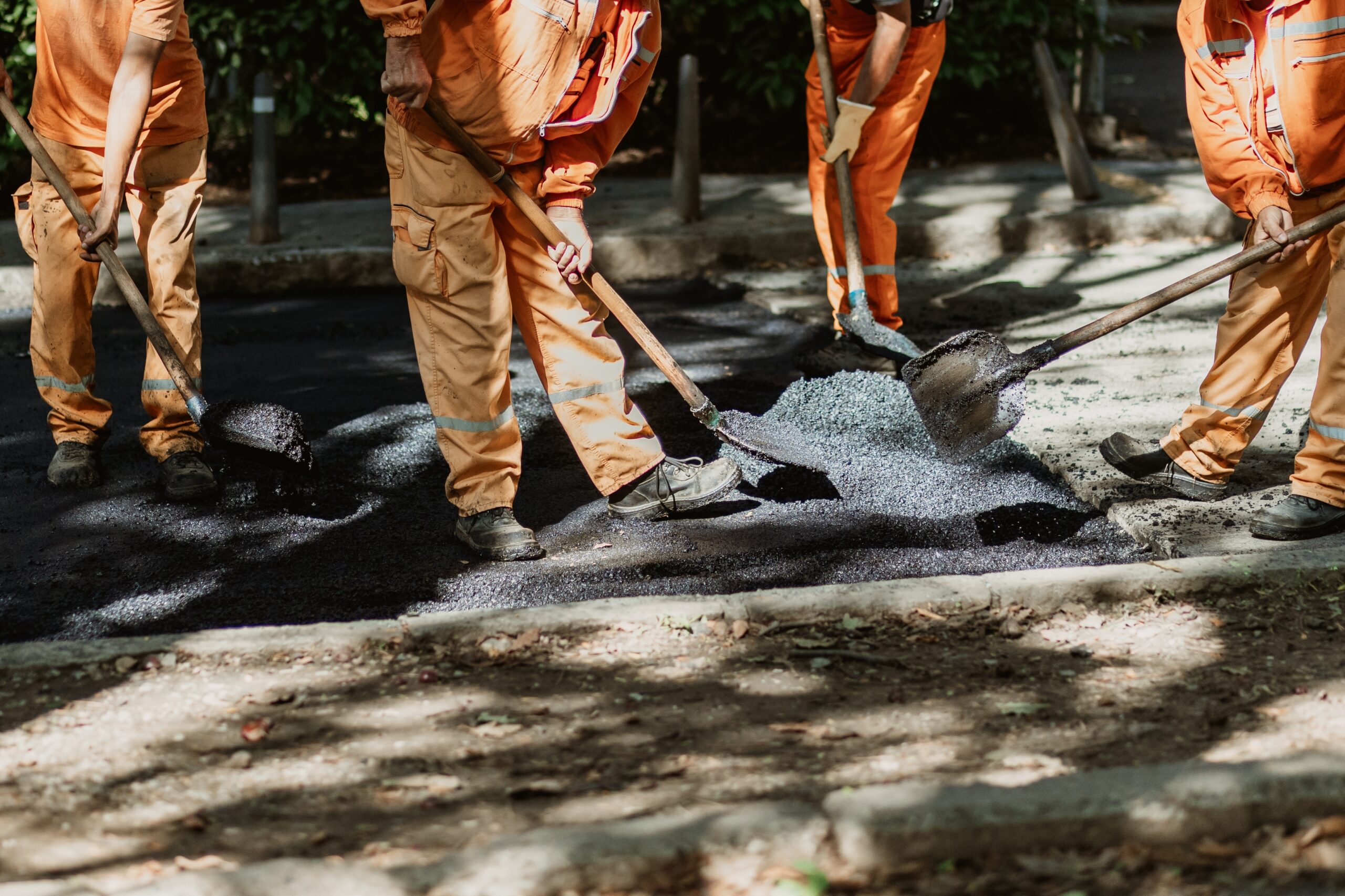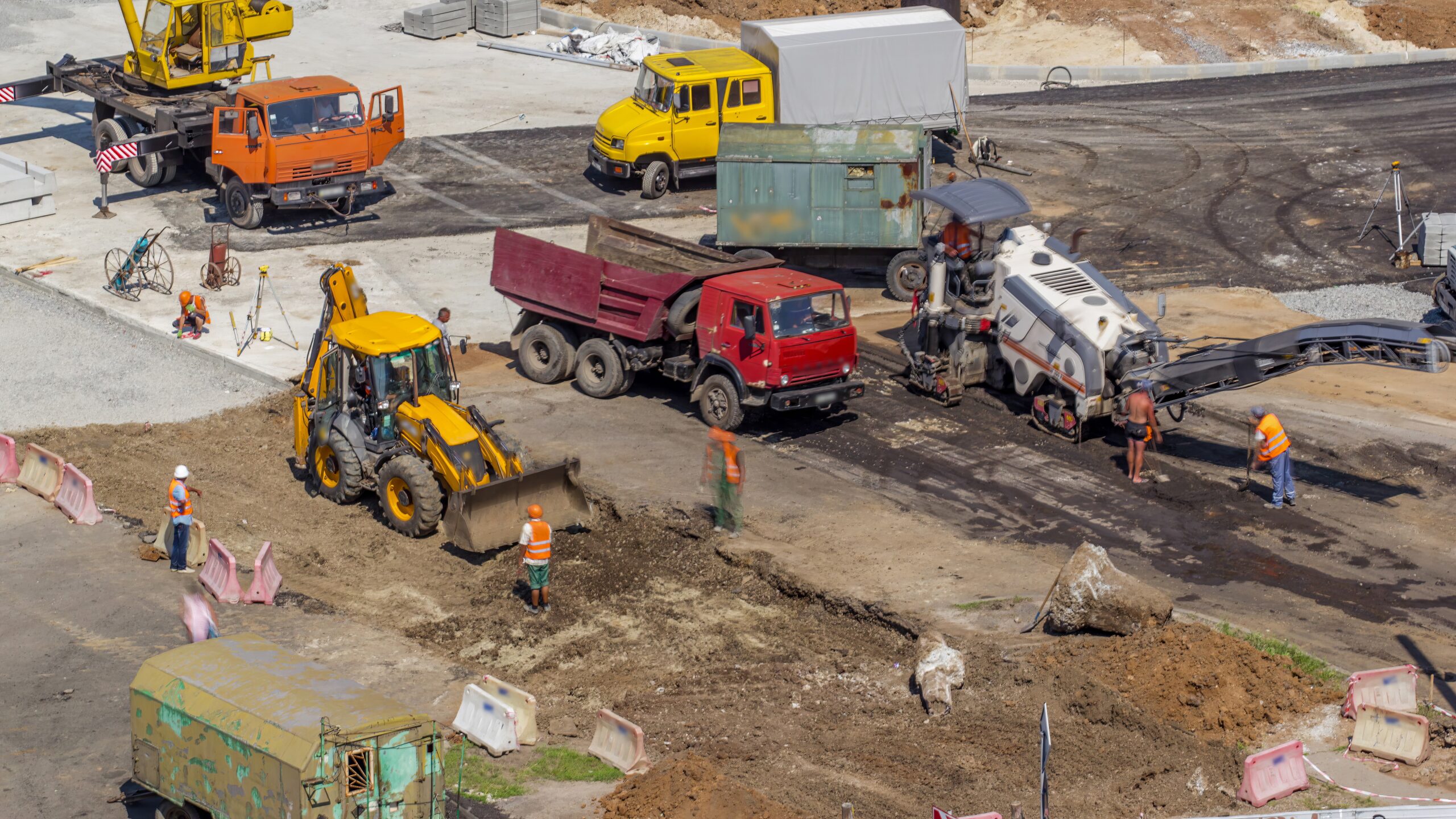
Have you noticed how small cracks in your asphalt pavement can quickly turn into major issues?
These minor imperfections, if left untreated, can lead to significant damage, compromising the integrity and appearance of your pavement. Crack sealing is a proactive maintenance strategy designed to prevent such deterioration. By sealing off cracks early, you block moisture, chemicals, and debris from penetrating the surface, preserving structural integrity and slowing down future damage.
Using the right sealing methods not only extends the life of your pavement but also maintains a cleaner, more professional appearance. Whether you’re managing a commercial parking lot or maintaining a private driveway, crack sealing is one of the smartest preventative maintenance steps you can take to protect your asphalt.
What is Crack Sealing?
Crack sealing is a proven pavement maintenance process. It involves applying a flexible sealant into cracks in asphalt to prevent moisture and debris from entering. This prevents further damage and keeps the pavement in good condition for longer.
Unlike crack filling, which is typically used for non-working cracks, crack sealing is designed for active cracks that expand and contract with temperature changes. The sealant used in crack sealing is durable, flexible, and weather-resistant.
Why Crack Sealing Matters?
When cracks are left untreated, they allow water to enter the base and subbase layers of the asphalt. This weakens the entire structure and can lead to potholes, alligator cracks, and even total surface failure.
Sealing cracks early can prevent major damage. It also reduces long-term maintenance costs by stopping the problem at its root. Most importantly, it increases the overall lifespan of your pavement.
Common Types of Asphalt Cracks
Understanding the type of crack helps you choose the right sealing method. Let’s explore the most common crack types in asphalt pavement.
Longitudinal Cracks
These cracks run parallel to the direction of traffic. They usually form due to shrinkage or improper joint construction. Longitudinal cracks are often found in the center of roads and should be sealed early to prevent expansion.
Transverse Cracks
These cracks form across the pavement and are caused by temperature changes and asphalt shrinkage. They are very common in areas with extreme seasonal weather changes.
Block Cracks
Block cracks appear as square or rectangular patterns. These cracks form due to poor asphalt mix or aging of the surface. Block cracks need sealing to prevent water damage and further deterioration.
Edge Cracks
Edge cracks form near the sides of the pavement. They are usually caused by poor drainage or lack of support at the pavement edge. Sealing them is critical for preventing water infiltration.
Alligator Cracks
This type of cracking resembles alligator skin and is a sign of structural failure. Sealing does not help in this case. Full-depth patching or resurfacing is usually needed.
Best Crack Sealing Methods for Long-Term Performance
Professionals use different methods based on the crack type, surface condition, and usage level. Let’s look at the most effective methods for crack sealing.
Routing and Sealing
This is one of the most reliable crack sealing techniques. It involves widening and deepening the crack using a router before filling it with hot rubberized sealant.
The routing creates a reservoir that allows better sealant bonding and movement flexibility. This method is excellent for working on cracks on high-traffic roads and parking lots, making it a preferred crack sealing method for durability.
Overband Crack Sealing
In this method, sealant is applied into the crack and then smoothed over the surface to form a narrow band. The overband provides extra protection around the crack edges.
It creates a waterproof layer that prevents water and debris from entering. This method works well for medium-traffic areas and prevents edge cracking.
Flush Fill Sealing
This method involves filling the crack level with the pavement surface. It doesn’t involve any extra overband. Flush fill is ideal for small or non-working cracks and works well in residential driveways.
Though it’s quick and cost-effective, it may not provide the same level of protection as routed or overbanded sealing.
Cold Pour Sealing
Cold pour sealants are pre-mixed and ready to use. They don’t require heating and are commonly used for small cracks or DIY repairs.
Cold pour sealants are easy to apply but don’t last as long as hot-pour options. They are best used for temporary fixes in low-traffic areas.
How to Prepare for Crack Sealing
Preparation is key to long-lasting crack sealing results. Even the best sealant won’t work if the crack is dirty or wet.
Cleaning the Crack
Before sealing, all loose debris, dirt, and vegetation must be removed from the crack. This can be done using compressed air, wire brushes, or a heat lance. Clean cracks allow better sealant adhesion.
Ensuring Dry Conditions
Sealants do not stick to wet surfaces. Make sure the pavement is completely dry before applying any material. Avoid sealing during rain or when humidity is high.
Choosing the Right Time
Crack sealing works best in moderate weather. Ideal temperatures are between 50°F and 80°F. Extreme heat or cold can affect sealant performance.
Crack Sealing Tools and Equipment
Professionals use a variety of equipment to achieve the best results.
Crack Routers: These machines cut and widen the crack to create a reservoir for the sealant. This improves flexibility and bonding.
Melter Applicators: These heat the sealant to the right temperature and then apply it evenly into the crack. Some machines allow for banding as well.
Heat Lances: These remove moisture and debris using high-temperature air. They’re especially useful in cold or damp climates.
How Often Should You Seal Cracks?
Asphalt surfaces should be inspected once or twice a year. New cracks should be sealed as soon as possible to prevent them from spreading.
In general, crack sealing should be done every two to three years, depending on traffic levels and climate. Waiting too long allows cracks to grow deeper, making repair more difficult and expensive.
Benefits of Professional Crack Sealing
Professional crack sealing offers several long-term benefits. It improves the appearance of your pavement while extending its life by up to 7 years or more.
It also reduces the risk of accidents by maintaining a smooth surface. In commercial areas, this improves safety for both pedestrians and vehicles. Long-term, it helps delay more costly repairs like patching or resurfacing.
Environmental Advantages
Crack sealing is also environmentally friendly. By preventing full-scale asphalt replacement, it reduces the demand for raw materials and lowers greenhouse gas emissions associated with repaving.
Keeping existing pavement in good condition is always more sustainable than building new surfaces from scratch.
Choosing the Right Contractor
The quality of crack sealing depends heavily on the skill of the contractor. Make sure to hire professionals with the right experience, equipment, and materials.
Choose a licensed and insured contractor with positive customer reviews. Look for someone who specializes in both residential and commercial projects.
In Omaha and surrounding areas, Asphalt Coatings Company is known for delivering reliable, long-lasting crack sealing services.
With decades of experience and a commitment to quality, they’re a top choice for pavement maintenance.
Frequently Asked Questions
What’s The Difference Between Crack Sealing And Crack Filling?
Crack sealing uses flexible, rubberized sealants that move with the pavement, making it more durable. Crack filling uses rigid materials and is better for non-working cracks.
Can I Seal Cracks Myself?
DIY sealing is possible for small, shallow cracks using cold-pour products. However, for best results, professional sealing is recommended, especially for larger or deeper cracks.
How Long Does Sealed Asphalt Last?
When done properly, crack sealing can extend pavement life by 5 to 7 years or more, depending on traffic, climate, and maintenance.
How Much Does Crack Sealing Cost?
Crack sealing generally costs between $0.50 and $1.00 per linear foot. Costs may vary based on location, method used, and project size.
Is Sealing Necessary For New Asphalt?
Yes. Even new asphalt can develop cracks over time. Sealing early helps prevent further damage and maintains a smooth, clean surface.
Smart Maintenance Pays Off
Crack sealing is a cost-effective and efficient method to maintain asphalt pavements. By understanding the best practices and implementing regular maintenance, you can extend the life of your pavement, enhance safety, and save on costly repairs.
For professional crack sealing services, consider reaching out to experienced providers like Asphalt Coatings Company to ensure quality and durability.



